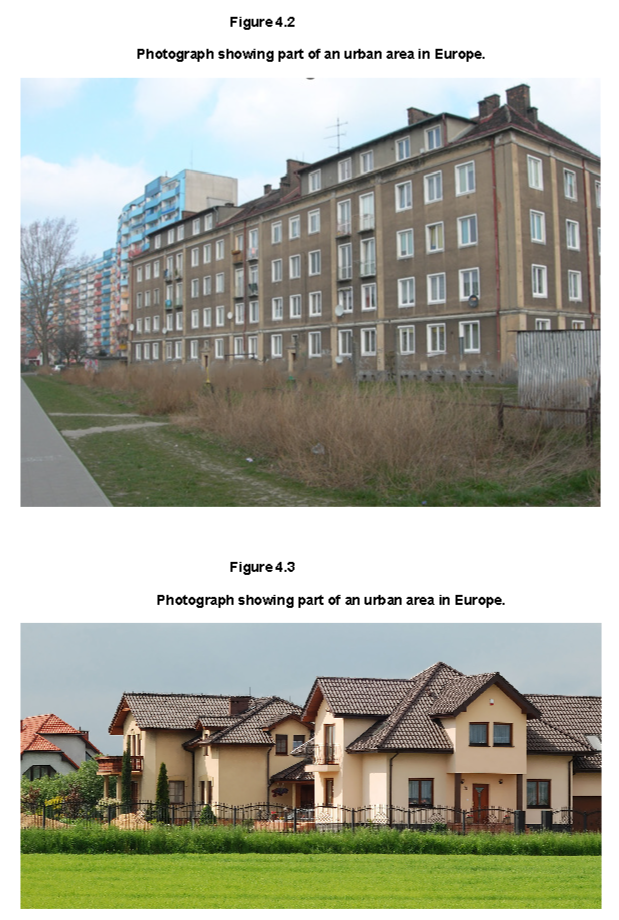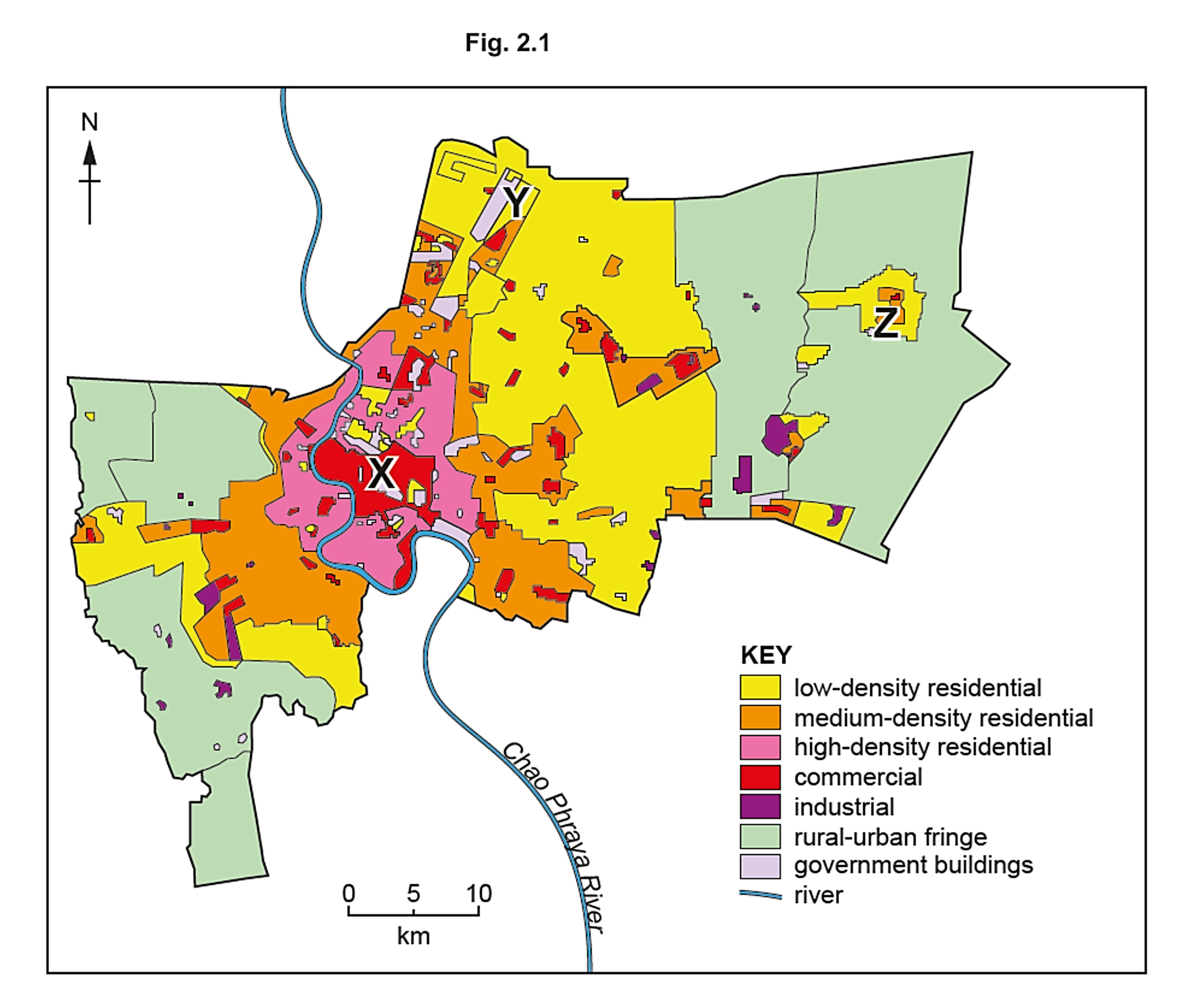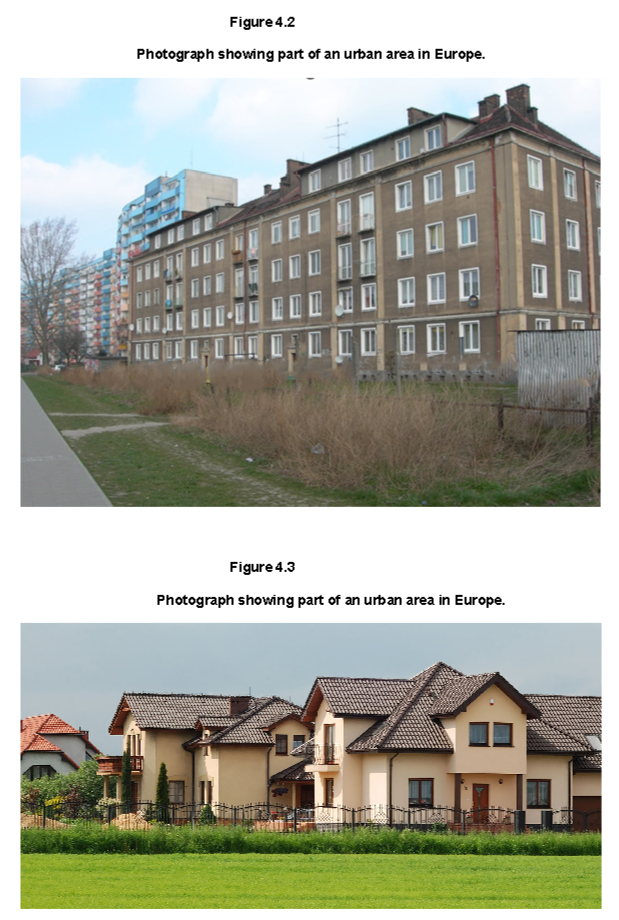Figures 4.2 and 4.3 (Insert) are photographs of two different parts of an urban area in Europe.

Compare three features of the housing shown in Figures 4.2 and 4.3.
Did this page help you?
Syllabus Edition
First teaching 2025
First exams 2027
Exam code: 0460 & 0976
Figures 4.2 and 4.3 (Insert) are photographs of two different parts of an urban area in Europe.

Compare three features of the housing shown in Figures 4.2 and 4.3.
How did you do?
Did this page help you?
Study Fig. 2.1, a map showing urban zones in Bangkok, the capital city of Thailand (a country in Asia).

What is the direction from point X in the CBD of Bangkok to the government buildings at Y?
How did you do?
Using Fig. 2.1, describe the location of the high-density residential zones in Bangkok.
How did you do?
The residential area in the rural-urban fringe marked Z on Fig. 2.1 has been recently developed. Give three advantages to living on the rural-urban fringe.
How did you do?
Did this page help you?
State one opportunity of urban living.
How did you do?
Describe one way in which urban inequality affects people.
How did you do?
Suggest one reason why many people move from rural to urban areas.
How did you do?
Did this page help you?
State one challenge of rural living.
How did you do?
Describe one way in which rural isolation affects people.
How did you do?
Suggest one reason why some people choose to remain in rural areas despite the challenges.
How did you do?
Did this page help you?
Figures 4.2 and 4.3 are photographs of two different parts of an urban area in Europe.

Assess the extent to which inequalities are likely to exist between the people living in the urban areas shown in Figures 4.2 and 4.3.
How did you do?
Did this page help you?
Describe the impacts of urban sprawl on the natural environment.
How did you do?
Did this page help you?
Explain how air pollution causes problems for people who live in urban areas.
How did you do?
Did this page help you?
Fig. 4.1 shows pollution in Accra, the capital city of Ghana, a country in Africa.

Using Fig. 4.1, describe four types of pollution shown.
How did you do?
Did this page help you?
Explain why access to services is better in urban areas than in rural areas.
How did you do?
Did this page help you?
Evaluate the extent to which waste management strategies can solve the challenges of urbanisation?
How did you do?
Did this page help you?
Assess the social and economic impacts of inequality in urban areas.
How did you do?
Did this page help you?
Evaluate the impact of transport problems on people’s quality of life in urban areas.
How did you do?
Did this page help you?
Evaluate the extent to which urbanisation creates more opportunities than challenges in LICs?
How did you do?
Did this page help you?
Assess how unplanned settlements create challenges for sustainable urban growth.
How did you do?
Did this page help you?